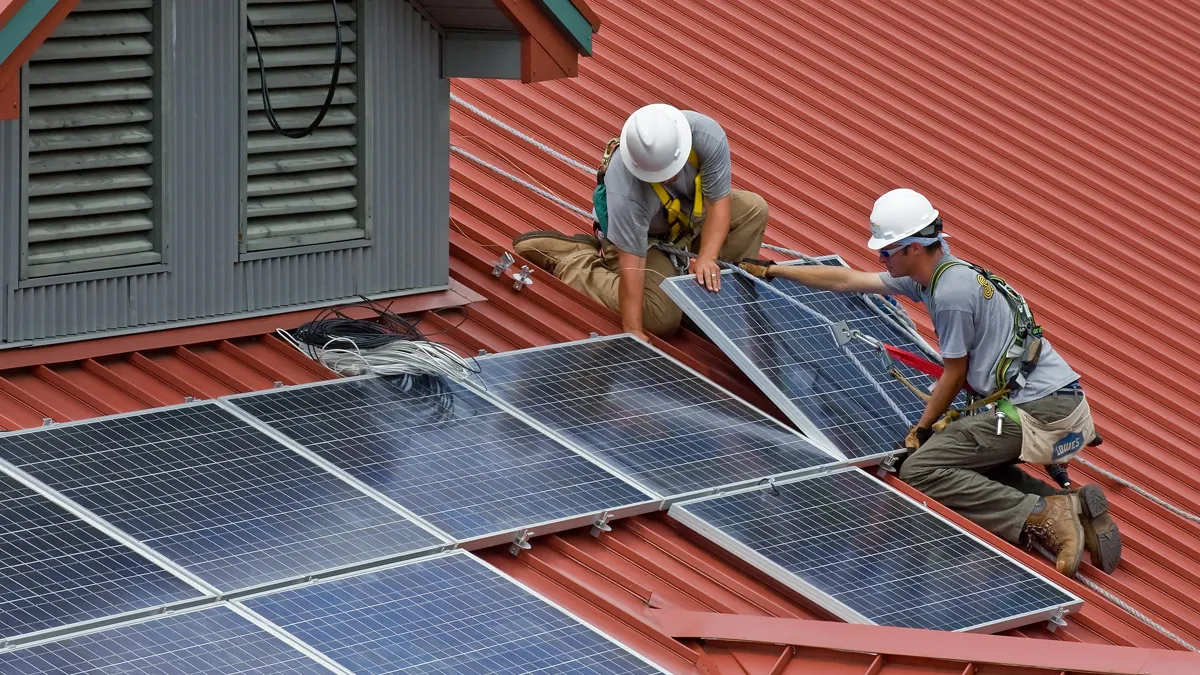Dive Brief:
- Dodge Data & Analytics surveyed more than 2,000 industry professionals in 86 countries for its newly released World Green Building Trends 2018 report and found that 47% expect more than 60% of their projects to be green by 2021. In the U.S., those anticipating a shift to mostly green projects increased from 32% to 45%.
- The top reasons for going green were to meet client demands (34%), comply with environmental regulations (33%) and social reasons, such as the drive to "do what's right" by producing healthier buildings (27%). Of all the social factors presented in the survey, improved occupant health and wellbeing was most important (77% global; 78% in U.S.). However, although green building activity is expected to increase, not all professionals who plan to go mostly green intend to pursue certification via a third-party program. Even so, more than 66% of those that do certify their projects believe that the process results in better-performing buildings. Globally, new commercial construction, followed by new institutional construction, was the top sector for green building.
- The professionals surveyed also reported that there were obstacles to green building. The top barriers were actual and perceived first costs (49%), lack of political support or incentives (35%), affordability (33%), lack of public awareness (32%) and lack of market demand (25%).
Dive Insight:
The green building industry is also about to get some additional practical support from the International Code Council. The ICC recently released the 2018 edition of the International Green Building Code (IgCC), which addresses elements such as energy efficiency, resource conservation, site development and building performance.
The latest version integrates ANSI/ASHRAE/USGBC/IES 189.1 — "Standard for the Design of High-Performance Green Buildings Except Low-Rise Residential Buildings" into the IgCC. The ICC said this takes the cost and time burdens of development off local agencies, making the IgCC easier and cheaper for them to implement. According to the latest ICC data, 14 U.S. states and Washington, D.C., use at least some portion of the IgCC in their own building codes.
The U.S. Green Building Council said it will "recognize and reward" projects that comply with certain provisions of the IgCC within its LEED certification process.
LEED is likely the program most familiar to those in the construction industry, but there are other green certifications out there like United Kingdom-born BREEAM USA, Green Globes, the International Well Building Institute's WELL standard, the International Living Future Institute's Living Building Challenge and Zero Energy Building certifications and Parksmart.













